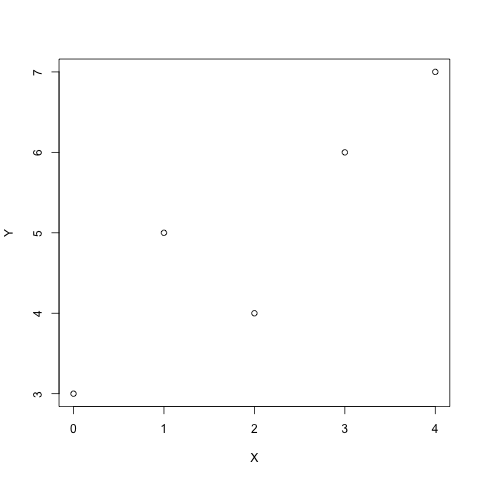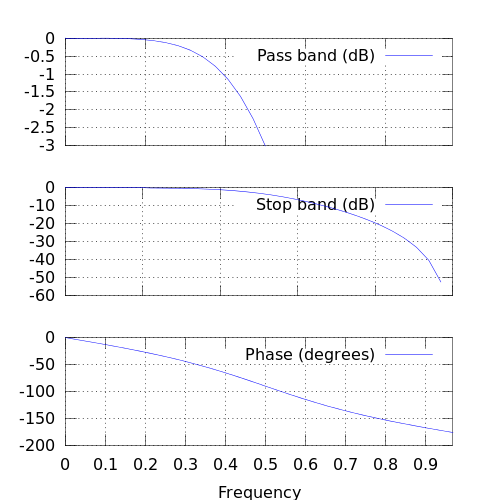IPython的魔法符号-Magics¶
openthings@163.com¶
最新的Jupyter Notebook可以混合执行Shell、Python以及Ruby、R等代码!¶
这一功能将解释型语言的特点发挥到了极致,从而打破了传统语言"运行时"的边界。
之前任何语言和IDE都是相互独立的,导致工作时需要在不同的系统间切换和拷贝/粘贴数据。 * Magic操作符可以在HTML页面中输入shell脚本以及Ruby等其它语言并混合执行,极大地提升了传统的“控制台”的生产效率。 * Magics是一个单行的标签式“命令行”系统,指示后续的代码将如何、以及被何种解释器去处理。 * Magisc与传统的shell脚本几乎没有什么区别,但是可以将多种指令混合在一起。
Magics 主要有两种语法:
- Line magics: 以
%字符开始,该行后面都为指令代码,参数用空格隔开,不需要加引号。 - Cell magics: 使用两个百分号 (
%%)开始, 后面的整个单元(Cell)都是指令代码。 注意,%%魔法操作符只在Cell的第一行使用,而且不能嵌套、重复(一个Cell只有一个)。极个别的情况,可以堆叠,但是只用于个别情况。
输入 [%lsmagic] 可以获得Magic操作符的列表。¶
如下所示(在Jupyter Notebook环境下,按[shift+enter]可以运行。):
In [ ]:
%lsmagic
缺省情况下,Automagic开关打开,不需要输入%符号,将会自动识别。**
| 注意,这有可能与其它的操作引起冲突,需要注意避免。如果有混淆情况,加上%符号即可。
下面显示运行一段代码所消耗的时间。
In [26]:
time print("hi")
hi
CPU times: user 0 ns, sys: 0 ns, total: 0 ns
Wall time: 47.9 µs
In [27]:
%time
CPU times: user 0 ns, sys: 0 ns, total: 0 ns
Wall time: 4.77 µs
执行Shell脚本。¶
In [9]:
ls -l -h
总用量 340K
-rw-rw-r-- 1 supermap supermap 266K 4月 29 09:29 jupyter_magics.ipynb
-rw-rw-r-- 1 supermap supermap 58K 4月 27 12:38 pandas_quickstart.ipynb
-rw-rw-r-- 1 supermap supermap 12K 4月 27 12:28 pystart_databasic.ipynb
In [10]:
!ls -l -h
总用量 340K
-rw-rw-r-- 1 supermap supermap 266K 4月 29 09:29 jupyter_magics.ipynb
-rw-rw-r-- 1 supermap supermap 58K 4月 27 12:38 pandas_quickstart.ipynb
-rw-rw-r-- 1 supermap supermap 12K 4月 27 12:28 pystart_databasic.ipynb
In [16]:
files = !ls -l -h
files
Out[16]:
['总用量 348K',
'-rw-rw-r-- 1 supermap supermap 276K 4月 29 09:31 jupyter_magics.ipynb',
'-rw-rw-r-- 1 supermap supermap 58K 4月 27 12:38 pandas_quickstart.ipynb',
'-rw-rw-r-- 1 supermap supermap 12K 4月 27 12:28 pystart_databasic.ipynb']
执行多行shell脚本。¶
In [25]:
%%!
ls -l
pwd
who
Out[25]:
['总用量 344',
'-rw-rw-r-- 1 supermap supermap 274868 4月 29 09:33 jupyter_magics.ipynb',
'-rw-rw-r-- 1 supermap supermap 59280 4月 27 12:38 pandas_quickstart.ipynb',
'-rw-rw-r-- 1 supermap supermap 11528 4月 27 12:28 pystart_databasic.ipynb',
'/home/supermap/GISpark/git_notebook/pystart',
'supermap :0 2016-04-28 20:39 (:0)',
'supermap pts/0 2016-04-28 21:50 (:0)',
'supermap pts/6 2016-04-28 22:22 (:0)']
下面开始体验一下魔法操作符的威力。¶
载入matplotlib和numpy,后面的数值计算和绘图将会使用。
%timeit 魔法,计量代码的执行时间, 适用于单行和cell:¶
In [50]:
%timeit np.linalg.eigvals(np.random.rand(100,100))
The slowest run took 8.96 times longer than the fastest. This could mean that an intermediate result is being cached.
100 loops, best of 3: 5.82 ms per loop
In [4]:
%%timeit a = np.random.rand(100, 100)
np.linalg.eigvals(a)
100 loops, best of 3: 6.07 ms per loop
%%capture 魔法,用于捕获stdout/err, 可以直接显示,也可以存到变量里备用:¶
In [4]:
%%capture capt
from __future__ import print_function
import sys
print('Hello stdout')
print('and stderr', file=sys.stderr)
In [5]:
capt.stdout, capt.stderr
Out[5]:
('Hello stdout\n', 'and stderr\n')
In [53]:
capt.show()
Hello stdout
and stderr
%%writefile 魔法,将后续的语句写入文件中:¶
In [8]:
%%writefile foo.py
print('Hello world')
Writing foo.py
In [9]:
%run foo
Hello world
Magics 运行其它的解释器。
执行时从stdin取得输入,就像你自己在键入一样。
直接在%%script 行后传入指令即可使用。¶
后续的cell中的内容将按照指示符运行,子进程的信息通过stdout/err捕获和显示。
In [1]:
%%script python
import sys
print('hello from Python %s' % sys.version)
hello from Python 3.5.1 |Anaconda 4.0.0 (64-bit)| (default, Dec 7 2015, 11:16:01)
[GCC 4.4.7 20120313 (Red Hat 4.4.7-1)]
In [2]:
%%script python3
import sys
print('hello from Python: %s' % sys.version)
hello from Python: 3.5.1 |Anaconda 4.0.0 (64-bit)| (default, Dec 7 2015, 11:16:01)
[GCC 4.4.7 20120313 (Red Hat 4.4.7-1)]
etc.
| **等价于这个操作符: %%script <name> **
In [3]:
%%ruby
puts "Hello from Ruby #{RUBY_VERSION}"
Hello from Ruby 2.1.5
In [4]:
%%bash
echo "hello from $BASH"
hello from /bin/bash
写一个脚本文件,名为 lnum.py, 然后执行:
In [6]:
%%writefile ./lnum.py
print('my first line.')
print("my second line.")
print("Finished.")
Writing ./lnum.py
In [33]:
%%script python ./lnum.py
#
my first line.
my second line.
Finished.
可以直接从子进程中捕获stdout/err到Python变量中, 替代直接进入stdout/err。
In [14]:
%%bash
echo "hi, stdout"
echo "hello, stderr" >&2
hi, stdout
hello, stderr
In [15]:
%%bash --out output --err error
echo "hi, stdout"
echo "hello, stderr" >&2
可以直接访问变量名了。
In [17]:
print(error)
print(output)
hello, stderr
hi, stdout
--out/err 捕获输出。
In [34]:
%%ruby --bg --out ruby_lines
for n in 1...10
sleep 1
puts "line #{n}"
STDOUT.flush
end
Starting job # 2 in a separate thread.
当后台线程保存输出时,有一个stdout/err pipes, 而不是输出的文本形式。¶
In [35]:
ruby_lines
Out[35]:
<_io.BufferedReader name=52>
In [36]:
print(ruby_lines.read())
b'line 1\nline 2\nline 3\nline 4\nline 5\nline 6\nline 7\nline 8\nline 9\n'
Cython Magic 函数扩展¶
IPtyhon 包含 cythonmagic
extension,提供了几个与Cython代码工作的魔法函数。使用 %load_ext
载入,如下:
In [37]:
%load_ext cythonmagic
/home/supermap/anaconda3/envs/GISpark/lib/python3.5/site-packages/IPython/extensions/cythonmagic.py:21: UserWarning: The Cython magic has been moved to the Cython package
warnings.warn("""The Cython magic has been moved to the Cython package""")
** %%cython_pyximport**
magic函数允许你在Cell中使用任意的Cython代码。Cython代码被写入.pyx
文件,保存在当前工作目录,然后使用pyximport
引用进来。需要指定一个模块的名称,所有的符号将被自动import。
In [38]:
%%cython_pyximport foo
def f(x):
return 4.0*x
ERROR: Cell magic `%%cython_pyximport` not found.
In [6]:
f(10)
Out[6]:
40.0
%cython magic类似于 %%cython_pyximport magic,
但不需要指定一个模块名称. %%cython magic 使用
~/.cython/magic目录中的临时文件来管理模块,所有符号会被自动引用。
下面是一个使用Cython的例子,Black-Scholes options pricing algorithm:
In [39]:
%%cython
cimport cython
from libc.math cimport exp, sqrt, pow, log, erf
@cython.cdivision(True)
cdef double std_norm_cdf(double x) nogil:
return 0.5*(1+erf(x/sqrt(2.0)))
@cython.cdivision(True)
def black_scholes(double s, double k, double t, double v,
double rf, double div, double cp):
"""Price an option using the Black-Scholes model.
s : initial stock price
k : strike price
t : expiration time
v : volatility
rf : risk-free rate
div : dividend
cp : +1/-1 for call/put
"""
cdef double d1, d2, optprice
with nogil:
d1 = (log(s/k)+(rf-div+0.5*pow(v,2))*t)/(v*sqrt(t))
d2 = d1 - v*sqrt(t)
optprice = cp*s*exp(-div*t)*std_norm_cdf(cp*d1) - \
cp*k*exp(-rf*t)*std_norm_cdf(cp*d2)
return optprice
ERROR: Cell magic `%%cython` not found.
In [40]:
black_scholes(100.0, 100.0, 1.0, 0.3, 0.03, 0.0, -1)
---------------------------------------------------------------------------
NameError Traceback (most recent call last)
<ipython-input-40-ae31cbfa5fba> in <module>()
----> 1 black_scholes(100.0, 100.0, 1.0, 0.3, 0.03, 0.0, -1)
NameError: name 'black_scholes' is not defined
测量一下运行时间。¶
In [45]:
#%timeit black_scholes(100.0, 100.0, 1.0, 0.3, 0.03, 0.0, -1)
Cython 允许使用额外的库与你的扩展进行链接,采用 -l 选项 (或者
--lib)。 注意,该选项可以使用多次,libraries, such as
-lm -llib2 --lib lib3. 这里是使用 system math library的例子:
In [10]:
%%cython -lm
from libc.math cimport sin
print 'sin(1)=', sin(1)
sin(1)= 0.841470984808
同样,可以使用 -I/--include 来指定包含头文件的目录, 以及使用
-c/--compile-args 编译选项,以及 extra_compile_args of the
distutils Extension class. 请参考 the Cython docs on C library
usage
获得更详细的说明。
Rmagic 函数扩展¶
rmagic扩展来调用R模块,是通过rpy2来实现的(安装:conda install rpy2)。
| rpy2的文档:http://rpy2.readthedocs.io/en/version_2.7.x/ ####
首先使用 %load_ext 载入该模块:
注意:新的rpy2已改动,不能运行。参考:http://rpy2.readthedocs.io/en/version_2.7.x/interactive.html?highlight=rmagic
In [58]:
%reload_ext rmagic
/home/supermap/anaconda3/envs/GISpark/lib/python3.5/site-packages/IPython/extensions/rmagic.py:11: UserWarning: The rmagic extension in IPython has moved to `rpy2.ipython`, please see `rpy2` documentation.
warnings.warn("The rmagic extension in IPython has moved to "
典型的用法是使用R来计算numpy的Array的统计指标。我们试一下简单线性模型,输出scatterplot。
In [62]:
%matplotlib inline
import numpy as np
import matplotlib.pyplot as plt
In [63]:
X = np.array([0,1,2,3,4])
Y = np.array([3,5,4,6,7])
plt.scatter(X, Y)
Out[63]:
<matplotlib.collections.PathCollection at 0x7f9760cdd208>

首先把变量赋给 R, 拟合模型并返回结果。 %Rpush 拷贝 rpy2中的变量. %R 对 rpy2 中的字符串求值,然后返回结果。在这里是线性模型的协方差-coefficients。
In [64]:
%Rpush X Y
%R lm(Y~X)$coef
ERROR: Line magic function `%Rpush` not found.
ERROR: Line magic function `%R` not found.
%R可以返回多个值。
In [65]:
%R resid(lm(Y~X)); coef(lm(X~Y))
ERROR: Line magic function `%R` not found.
可以将 %R 结果传回 python objects. 返回值是一个“;”隔开的多行表达式,coef(lm(X~Y)).
namespace 有变量需要获取。 | 主要区别是: (%Rget)返回值, 而(%Rpull)从 self.shell.user_ns 拉取。想象一下,我们计算得到变量 “a” 在rpy2’s namespace. 使用 %R magic, 我们得到结果并存储到 b。可以从 user_ns 使用 %Rpull得到。返回的是同一个数据。
In [6]:
b = %R a=resid(lm(Y~X))
%Rpull a
print(a)
assert id(b.data) == id(a.data)
%R -o a
[-0.2 0.9 -1. 0.1 0.2]
R的控制台stdout()被ipython捕获。
In [7]:
from __future__ import print_function
v1 = %R plot(X,Y); print(summary(lm(Y~X))); vv=mean(X)*mean(Y)
print('v1 is:', v1)
v2 = %R mean(X)*mean(Y)
print('v2 is:', v2)
Call:
lm(formula = Y ~ X)
Residuals:
1 2 3 4 5
-0.2 0.9 -1.0 0.1 0.2
Coefficients:
Estimate Std. Error t value Pr(>|t|)
(Intercept) 3.2000 0.6164 5.191 0.0139 *
X 0.9000 0.2517 3.576 0.0374 *
---
Signif. codes: 0 ‘***’ 0.001 ‘**’ 0.01 ‘*’ 0.05 ‘.’ 0.1 ‘ ’ 1
Residual standard error: 0.7958 on 3 degrees of freedom
Multiple R-squared: 0.81, Adjusted R-squared: 0.7467
F-statistic: 12.79 on 1 and 3 DF, p-value: 0.03739

v1 is: [ 10.]
v2 is: [ 10.]
我们希望用R在cell级别。而且numpy最好不要转换,参考R: rnumpy ( http://bitbucket.org/njs/rnumpy/wiki/API ) 。
In [8]:
%%R -i X,Y -o XYcoef
XYlm = lm(Y~X)
XYcoef = coef(XYlm)
print(summary(XYlm))
par(mfrow=c(2,2))
plot(XYlm)
Call:
lm(formula = Y ~ X)
Residuals:
1 2 3 4 5
-0.2 0.9 -1.0 0.1 0.2
Coefficients:
Estimate Std. Error t value Pr(>|t|)
(Intercept) 3.2000 0.6164 5.191 0.0139 *
X 0.9000 0.2517 3.576 0.0374 *
---
Signif. codes: 0 ‘***’ 0.001 ‘**’ 0.01 ‘*’ 0.05 ‘.’ 0.1 ‘ ’ 1
Residual standard error: 0.7958 on 3 degrees of freedom
Multiple R-squared: 0.81, Adjusted R-squared: 0.7467
F-statistic: 12.79 on 1 and 3 DF, p-value: 0.03739

octavemagic: Octave inside IPython¶
oct2py 和h5py 软件包。
| 载入扩展包:
%octave,%octave_push, 和 %octave_pull。
| 第一个执行一行或多行Octave, 后面两个执行 Octave 和 Python 的变量交换。
In [110]:
x = %octave [1 2; 3 4];
x
Out[110]:
array([[ 1., 2.],
[ 3., 4.]])
In [111]:
a = [1, 2, 3]
%octave_push a
%octave a = a * 2;
%octave_pull a
a
Out[111]:
array([[2, 4, 6]])
``%%octave`` : 多行 Octave 被执行。但与单行不同, 没有值被返回,
我们使用-i 和 -o 指定输入和输出变量。
In [116]:
%%octave -i x -o y
y = x + 3;
In [117]:
y
Out[117]:
array([[ 4., 5.],
[ 6., 7.]])
Plot输出自动被捕获和显示,使用 -f 参数选择输出的格式 (目前支持
png 和 svg)。
In [118]:
%%octave -f svg
p = [12 -2.5 -8 -0.1 8];
x = 0:0.01:1;
polyout(p, 'x')
plot(x, polyval(p, x));
12*x^4 - 2.5*x^3 - 8*x^2 - 0.1*x^1 + 8
使用 -s 参数调整大小:
In [119]:
%%octave -s 500,500
# butterworth filter, order 2, cutoff pi/2 radians
b = [0.292893218813452 0.585786437626905 0.292893218813452];
a = [1 0 0.171572875253810];
freqz(b, a, 32);

In [120]:
%%octave -s 600,200 -f png
subplot(121);
[x, y] = meshgrid(0:0.1:3);
r = sin(x - 0.5).^2 + cos(y - 0.5).^2;
surf(x, y, r);
subplot(122);
sombrero()
